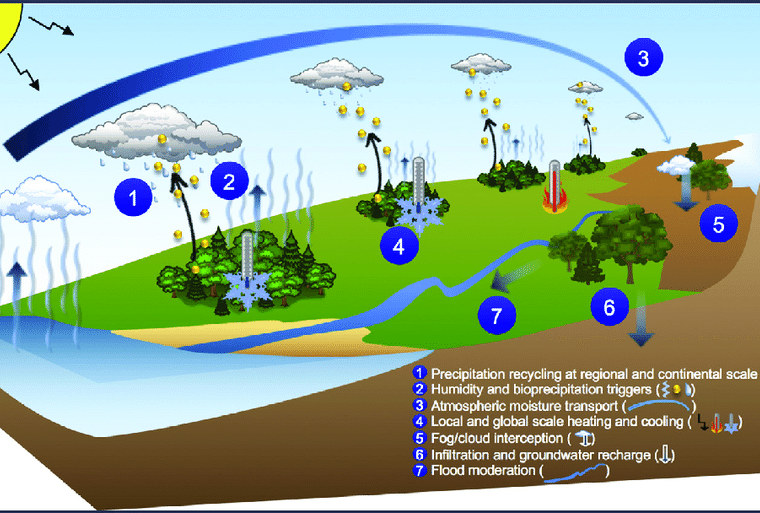Terrestrial ecosystems, including forests and grasslands, play an important role in sequestering carbon dioxide (CO2), thereby helping to remove it from the atmosphere and lessening the effects of anthropogenic climate change (1-3). There are a number of greenhouse gas mitigation actions that can help to reduce the effects of climate change by reducing greenhouse gas sources and enhancing carbon sinks in forests and grasslands (4, 5, 3). Ecosystem carbon is of particular interest because of the importance of CO2 and methane (CH4) as important greenhouse gases, as well as the ability of ecosystem vegetation to absorb and sequester CO2 (1, 6). Land management actions can also affect the emissions of nitrous oxide (N2O)—another very potent greenhouse gas—although the role of forest and land management is small regarding this compound.
Forests and grasslands are managed for many different objectives and a variety of goods and services, including timber, range, water, recreation, and wildlife. The amount of carbon absorbed and stored within a particular ecosystem is affected by land use change, management activities, disturbance, the use of harvested wood, and climate. Carbon may be of interest in developing management plans and options, but rarely is it the primary management objective. These topic pages provide information to support the integration of carbon considerations into land management, particularly in the context of carbon as just one of multiple management objectives.
Janowiak, M.; Swanston, C. (May, 2017). Carbon and Land Management Introduction. U.S. Department of Agriculture, Forest Service, Climate Change Resource Center. www.fs.usda.gov/ccrc/topics/carbon-land-mgmt/introduction





